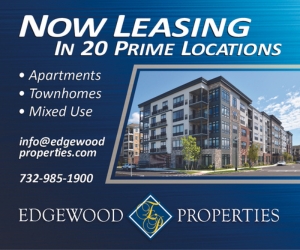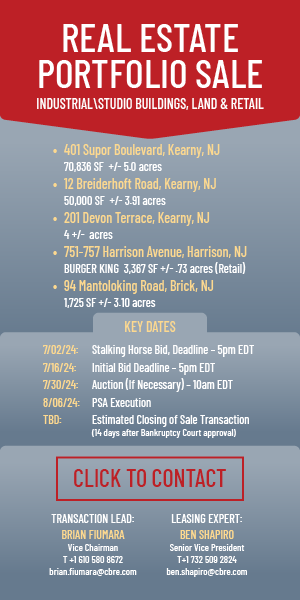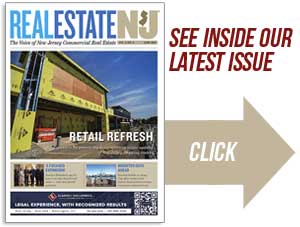We assembled a panel of industry experts to tackle our recent roundtable question.
Here’s what they had to say.

Chris A. Christoforou, principal, Thornton Tomasetti (Newark)
One prominent design trend is resiliency. In the aftermath of (Hurricane Sandy), which did so much damage in New Jersey, our clients are taking a harder look at incorporating resiliency features that will help mitigate risks from floodwaters.
Their capacity to respond and bounce back from such events affects their current and future success. Our team of engineers, architects and risk specialists take an interdisciplinary approach to resiliency, providing the expert information and advice, tools and solutions needed to help clients make decisions about physical improvements, mitigation and resiliency strategies over the short, medium and long term.
Other trends we see in the market are a growing appetite for advanced project delivery methods that speed construction and cut costs. Protective design is another consideration, especially for high-profile locations and data centers.
We craft solutions that provide the required protection without compromising unique architectural features.

Chip D’Angelo, president, WCD Group (Pennington)
We are seeing two distinct trends that we believe will continue to grow into 2018. The waterfront in both north and south Jersey and transit villages continue to draw both interest and competition, and as this expands, the development of properties once considered too contaminated — even five years ago — are now in play. Developers continue to become sophisticated in managing environmental risk and the properties that once seemed unattractive, now due to expanding development areas, are in demand.
The predominant use is mixed commercial and rental housing. Second, although the design-build project delivery system has been in place for many years — and the public-private partnership concept continues to grow in public projects — we are seeing private developers offer innovative design, build, own and operate proposals to municipalities and universities (such as dormitories). With out-of-the-box thinking, these strategies can work in the semi-private sector.

David T. Gockel, CEO and president, Langan Engineering
The so-called Amazon effect is spurring redevelopment of urban ‘last mile’ sites into e-commerce fulfillment centers where products enter and exit at Internet speed. The demand for last mile facilities is repurposing many sites, including Class B office and retail facilities. Langan is very active in this market providing site/civil, geotechnical and traffic engineering, and we see it benefiting many locations in the Meadowlands region, as well as cities like Elizabeth, Jersey City and Newark, among others.
On the environmental front, there is a growing concern about the presence of emerging contaminants — most notably per- and poly-fluorinated substances and 1,4-dioxane — in soil and groundwater and its impact on public water supplies. State and federal policy makers are still developing the regulations. Langan is actively engaged with industry and NJDEP to develop strategic solutions that balance regulatory concerns with safe, beneficial site re-development.

Michael Novak, president, Atlantic Environmental Solutions Inc. (Hoboken)
Developers, architects and realtors are becoming increasingly aware of vapor intrusion concerns for residential and commercial buildings.
Many mixed-use properties in urban and suburban settings are seeing rapid turnover, and gasoline stations, dry cleaners or small print shops — which can be sources for vapor intrusion — are being converted to other commercial uses. Volatile organic discharge (petroleum or solvents) does not have to migrate far to cross property boundaries in these settings. Protection to buildings using a geo-textile vapor barrier or installation of a passive sub-slab venting system provides a simple, low-cost, preventative engineering solution to nearby offsite sources of groundwater impact. For sites that may be impacted by migrating vapors, the average additional cost of $2 per square foot is money well spent as a preventative measure, providing sensitive tenants with a measure of safety and making the property more marketable in the future.

Paul Newman, partner, Kimmerle Newman Architects (Harding Township)
The buzzwords in office design have been “open plan,” “collaborative space,” “town hall space,” and “work/live place.” But one emerging trend we’re seeing is companies looking for the front entry of their building to be a “happening” space. As long as five years ago, we created spaces for HHF and Panalpina Logistics with cafes in the reception areas. Now the concept is evolving into that of an “office center” — an all-in-one space that merges reception, lounge, guest seating, social, coffee bar, meeting room and town hall. It can be used for any or all of these purposes simultaneously, or converted to a single use space. Kimmerle Group recently designed this style of entry for clients including Generali Pharma, LDS and Grunenthal Pharma, and there are similar projects in the pipeline. These open, inviting all-use spaces telegraph a clear and compelling message to visitors and employees: we are not your typical business.










